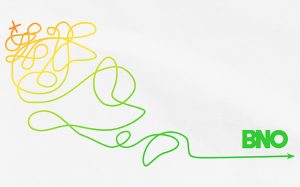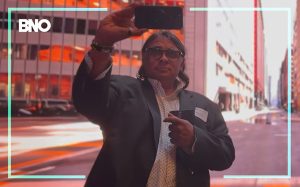
“To do our part in slowing the spread…” “For the safety of our customers, community, and employees…” “We are implementing a social distancing policy.” “We have heightened our cleaning measures.” “We are temporarily closing our stores.” Whether through email announcements or across social media, you’ve likely seen these phrases or variations repeated over the past week coming from the brands you interact with daily as the coronavirus pandemic continues to spread throughout the world.
In this uncertain time, brands are learning how to adapt their business operations and properly respond to a changing situation, not just daily, but hourly. We’ve written previously about how to build a crisis-proof employer brand. This is especially crucial now, but in the face of a pandemic, unlike any experienced in our lifetimes–it requires more extensive and thoughtful preparedness, action, and communication.
Already, many brands across industries, and all over the world are taking heed. They are developing response strategies in real-time to assure the wellbeing of their customers and employees and instill a sense of confidence and security at a time when both feel so hard to come by. What can we learn from these brand leaders? And what can you do to ensure you get it right–to sustain your corporate and employer brand for the long term?
- State Your Plan
On March 9, Delta took a lead in responding to the pandemic. CEO Ed Bastian emailed customers outlining the steps the airline is taking in the wake of the outbreak, from establishing a command center in Atlanta to expanding cleaning and disinfecting measures, filtering and replacing cabin air, as well as offering flexible ticket waivers for concerned travelers. More importantly, Bastian conveyed Delta’s preparedness, citing more than a decade’s worth of preparation, strong relationships with leading health experts, and learnings from past outbreaks including H1N1 and Ebola. Years’ worth of preparation, swift action, and detailed communication like this can instill immense trust in a brand, both during a crisis and in the period that follows.
In the passing days, other brands have outlined their own measures, from increased cleaning activities to curbside pickup options, reduced hours of operation, and even store and restaurant closings. Several brands including Apple, Patagonia, and Nordstrom have also outlined action plans for their employees, as we’ve done here at BNO. These include such steps as implementing remote working policies, guaranteeing pay and benefits for consumer service jobs amidst closures, and expanding sick leave. Gig economy brands like Uber Eats have waived delivery fees to help independent restaurants, offering some relief to their economic burden.
This careful planning and transparency helps strengthen both the corporate and employer brand during this unprecedented time, showcasing care and empathy for customers and employees. Furthermore, a new Trust Barometer Special Report by Edelman highlights just how important these COVID-19 employer communications are, showing “that ‘my employer’ was the most trusted institution by 18 points over business in general and NGOs, and by 27 points over government and media.
Do you have a plan in place for your business? What have you done to communicate it to stakeholders? Are you asking your employees and customers what they need? Are you thinking about the business you are about to be in?
- Be Mindful of Your Messaging
Marketing communications, from social calendars to broadcast advertising, are planned many months in advance, but this pandemic is requiring brands to think on their feet, making adjustments to content and even removing existing campaigns that feel ill-timed in this climate. Geico pulled its “Perfect High Five” ad spot from the air, due to the increased call for social distancing. On the other end of the spectrum, people are questioning the rationale for the abundance of Norwegian Cruise Lines ads on TV, billboards, and social media.
Meanwhile, some brands are looking to provide content of value to customers tailored to the current circumstances. Direct-to-consumer shoe brand Sarah Flint shared tips from its team on working remotely. Makeup brand Glossier is asking followers to share what content they’d like to see to make their days a little brighter, whether through funny memes or cute animal videos. Verizon is using social media to share philanthropic commitments to relief funds and efforts to meet the increased demand on its network to support business, education, and first responders.
Brands that shine in this moment resist the urge to insert a commercial edge into their messaging. To quote Maya Angelou, “I’ve learned that people will forget what you said, people will forget what you did, but people will never forget how you made them feel.”
No matter how far out you’ve planned your marketing communications, it’s imperative to reassess and not overlook any associations that might feel insensitive in this current state. Think about what messaging you can provide of value at this time, whether it’s social posts to help distract or free shipping so consumers can get the goods they need while remaining quarantined.
- Prepare for a New Normal
Brands must prepare to adjust to a new normal for the long haul, planning for what’s to come in the next several months and communicating this properly to all stakeholders. With increased orders for shelter in place, is your business prepared now and in the upcoming months for remote work? What new digital experiences can you invent to keep customers engaged? As retail futurist Doug Stephens said recently to the Business of Fashion, “Use this time to reinvent how you do what you do, bring consumers new alternatives, new value, and in the process even reinvent your own brand. Don’t let innovation stop, because this could be the window of opportunity.”
Friend to BNO and contributor to this article, Rich Schwartz supported this thinking, noting that in these circumstances, innovation is adaptation at the speed of the virus and speed of what people need.
“For years we have built innovation centers and honed design-thinking skills. Now, these are unwillingly part of an experiment we never would or could have done. What we will see now, being put to the value test is how we can make rapid adaptation and selfless collaboration the future of innovation for our businesses and customers,” said Schwartz in his latest article, “Business as (Un)usual”.
—Rich Schwartz
- Develop a Preventative Action Plan
All brands can learn from Delta’s preparedness. Of the many lessons brands can gather from the coronavirus pandemic, one of the most key is to plan for the future. Whether another disease outbreak hits, a natural disaster occurs, or a major societal or economic event takes place, the brands that will survive and thrive will have an action plan in place.
Think through how the next crisis will impact your business, operations, employees, customers, suppliers, and community to avoid reaction through proactive strategy. From building a strong foundation as a crisis shield to developing a response strategy, take the necessary steps now to ensure your brand is prepared in the event of another crisis.
Summary
In the wise words of Auguste Rodin, most famous for his sculpture, The Thinker, “Nothing is a waste of time if you use the experience wisely.” No one can be certain what happens on the other side of this pandemic other than it will change and redefine so much of who we are and what we do.
Having a strong corporate and employer brand and doing the right thing under confusing and tense circumstances will prepare and define your brand through a crisis, strengthening your relationship with customers and employees and attracting qualified candidates aligned with your company’s values.
Contribution by Rich Schwartz



